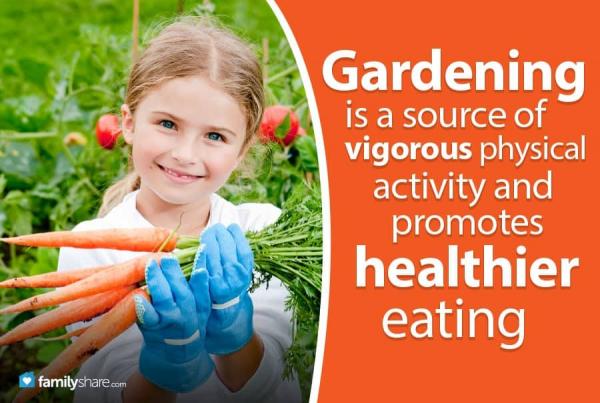
Gardening is not just for adults - it's a great activity to get kids involved with, too. Not only does gardening save money on produce, it is also a source of vigorous physical activity and promotes healthier eating. After all, kids are going to be way more interested in things they helped create than in what mom buys from the grocery store. With obesity on the rise in the United States, gardening sounds like just what the doctor ordered. The trick is figuring out how to get kids to help in the garden without resorting to fastening them to a chain gang. Luckily, you're not on your own. Here are a few ideas to help you get your kids interested in gardening.
Prep them for the gardening season early
Start talking about the garden sometime in late winter, dwelling particularly on all the yummy things that come out of the garden. If you're really ambitious, you might help them plant a bean in a cup and encourage them to water it and watch as it grows. This will make the gardening experience more real for them and help to visualize what a real garden is like.
Provide them with their own tools
If you want to start young, this might mean a plastic pail and shovel. If they're a little older, get them their own gloves and tools, so they feel like they're making a real contribution to the gardening.
Let them pick out a few of their own seeds to plant
This shows that you trust them to make their own decisions and gives them something specific for which to look forward. Some of the more fun items for children are carrots, radishes, and cucumbers. These are hardy plants less likely to be bothered by injudicious watering and more likely to produce good returns on the children's investment of time and energy. When planting time comes, remind them that they picked out these seeds and so whatever grows belongs to them.
Make gardening time-family time
The kids will follow your lead, so if you make gardening seem like something you enjoy, they're more likely to enjoy it, too. When it's time to water or weed the garden, try not to make it sound like another chore on their list. Make it a family activity. Use this time to measure the growth of the plants from week to week so the children can quantify the changes in the garden.
Harvest time should be a celebration
Show real excitement for each thing the child's plant produces. Try to include some of the products in your meals and help the children feel proud of their accomplishment in growing something that benefits the family. Let the child do the harvesting whenever possible so he or she can learn the difference between ripe and unripe fruits and vegetables.
Kids are naturally curious about how things work, and if you present a garden as a fun activity rather than a chore, they'll be far more amenable to interacting with it. Plus, it's a great way to get them outside and encourage healthy eating habits that they will carry on far into the future.

